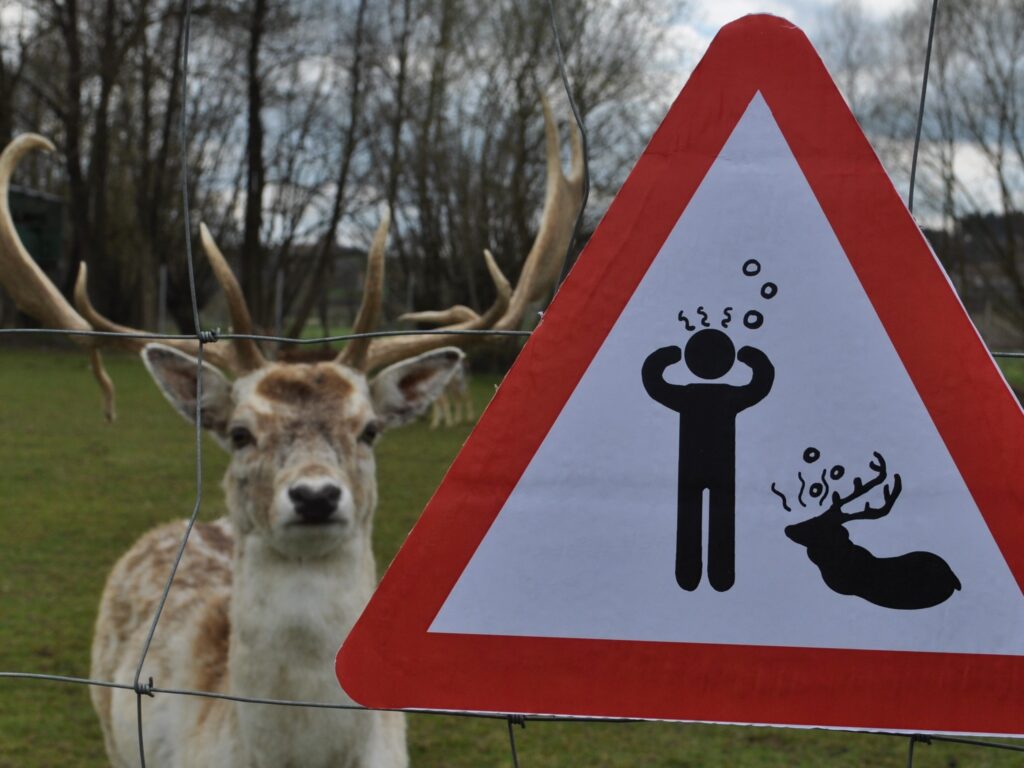Deer populations in the United States can be described as an epidemic. There are over 30 million deer roaming the nation, which can be found in every single state, even in the islands of Hawaii. Deer in the U.S. have a population density of 100 deer per kilometer, whereas the estimated safe carrying capacity of the environment is only eight deer per kilometer.
These numbers show a clear overpopulation problem. For this, we have no one to blame but humanity ourselves. Throughout most of the country, human activity ã hunting, trapping, and habitat destruction ã has eliminated or greatly reduced the number of large predators such as wolves, bears, and mountain lions. In the vast majority of areas where deer can be found, there is simply no predator that will easily hunt adult deer. This is what caused the deer population to explode by over 1,000-fold in the last 100 years. Deer can now be found anywhere with a small patch of woodland, even in big cities such as Seattle, New York, and Washington D.C.
The Problems with Overabundance
A number of problems have begun to become apparent as a result of this surplus of deer. Deer have a major impact on forest habitats to an extent that may be surprising. Some scientists are beginning to insist that there is currently no greater impact on forests in the eastern United States than the presence of the deer. To be clear, that includes major factors such as climate change, invasive species, and habitat alteration and destruction by humans. In this case, the deer trump them all.ô
Deer have particular feeding preferences for select plant species at specific times of their growth. When millions of deer feed on certain saplings, it radically alters the growth of the forest. The trees that do grow are trees that are less preferred by animal species, reducing the overall productivity of the forest. The animals that require the shrubs and bushes that the deer devour, such as songbirds that nest here, can be driven out entirely.ô
ãNot my Shrubs!ã
Unlike many other forest species, deer actually thrive perfectly well in ãedgeã spaces with fewer trees, habitats closer to lawns and suburbs. This means that deer are not as affected by the weakening forest habitats: a weak forest with fewer trees is their prime real estate. This is why deer are commonly found in surbian neighborhoods, causing damage to residential lawns and decorative shrubs. Deer are not victims of deforestation; if anything, they are a cause of it. In this way, it seems that deer are unlikely to suffer from the negative consequences of their own actions, and thus the problem cannot be solved without human intervention. However, there is one factor that could prove a threat to deer. Far from being a positive, however, this threat has the possibility of affecting many other animals ã and humans ã as well.
The Growing Threat
In the 1970s, an insidious disease was found to be affecting deer populations in Colorado, causing neurological degeneration in the deer that invariably resulted in death . This disease was found to be a prion disease, a variant of mad cow disease, scrapie, and kuru. It was dubbed Chronic Wasting Disease, or CWD, after the way that affected animals appeared to waste away until death.ô
By the current year, CWD affects deer in at least 25 states, stretching as far as Montana, Texas, and New York. It has also been found in other countries: Canada, Norway, Finland, Sweden, and even South Korea. The disease has only affected species of deer in nature, including white-tailed deer, elk, moose, and reindeer. CWD is nearly identical to other prion diseases in that it is highly transmissible, difficult to destroy, effectively untreatable, and always fatal.ô
Due to the current high density of deer, the disease can spread rapidly through a population. As much as the deer population needs to be controlled, the spread of CWD holds some danger for humans. A recent study suggested that the disease is capable of spreading to primates, meaning that it could spread from deer to humans. Given that the only other effective method we have come up with for controlling deer populations is killing and eating them, which is one way the disease might be able to spread, the writing on the wall is looking more and more to be disaster.
No cases of CWD have been found in humans, despite the thousands of deer consumed by hunters every year. Experts recommend caution, however, but not yet fear. Still, given the risks involved, we had best determine a new way to control deer populations, before we find not only our forests at risk, but our lives as well.
References
A deadly deer disease is spreading. Could it strike people, too?
Deer, Bear and Everywhere: Animals Move Into the City
Deer Overpopulation: Many Problems and a Possible Solution
Occurrence | Chronic Wasting Disease (CWD)
The Decline of Deer Populations
Too Many Deer: A Bigger Threat to Eastern Forests than Climate Change



